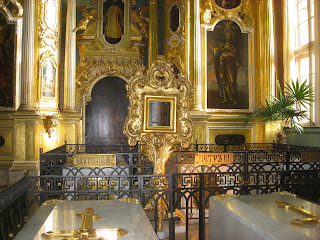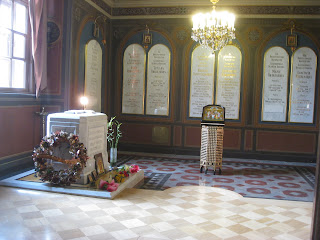Thanksgiving here in Denmark was a huge success. Thanks to the help of my host-mother, and one of my host sisters, we managed to pull off a very American Thanksgiving for 13 people. We started the night before, my host-sister making the pumpkin pie, and me the corn bread. Then, this morning, I started peeling 13 pounds of potatoes, all by myself. After that, my host mother and I made stuffing, cranberry sauce, baked pumpkin, and a waldorf salad. Around noon, the 12-Pound Turkey arrived with my host sister (we had a special connection to get the turkey, as they are hard to find here in Denmark). We put it in the oven for three and a half hours with the stuffing, and started making the candied sweet potatoes and mashed potatoes. We also made fresh whipped cream for the pumpkin pie. It was nice making everything from scratch, and now I know I am prepared should I ever have to make a Thanksgiving meal of my own.
All in all, it went very well. We set a formal, albeit Christmas-y table, and enjoyed the good food and great company. It was almost like being at home, just without the Macy’s Thanksgiving Day Parade. Tomorrow will be black Friday in America, but here in Denmark, everything will be back to usual.
Getting the Turkey Ready

Into the oven

Baked Pumpkin, Mashed Potatoes, and Gravy

Pumpkin Pie

A Set Table

The Finished Turkey

And of course, no Thanksgiving would be complete without left-overs.























































